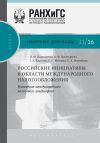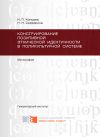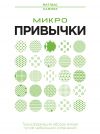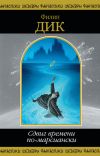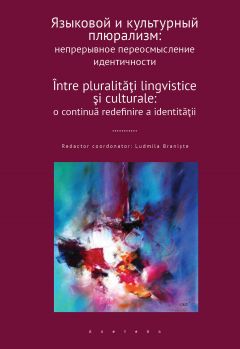
Автор книги: Сборник статей
Жанр: Культурология, Наука и Образование
Возрастные ограничения: +16
сообщить о неприемлемом содержимом
Текущая страница: 6 (всего у книги 19 страниц) [доступный отрывок для чтения: 6 страниц]
Поэтика выразительности, сформулированная А.К. Жолковским и Ю.К. Щегловым, успешно выполняет общие задачи поэтики: с ее помощью была создана “модель индивидуальной системы эстетически действенных свойств произведения в их функциональной взаимности с художественным целым” (Гаспаров, 2001: 787). На основе этой теории был составлен систематизированный репертуар приемов выразительности для объяснения эстетически-выразитель-ной функции художественного текста. Более того, с помощью поэтики выразительности описан “процесс постепенного создания произведения от тематического и идейного замысла до окончательного словесного оформления” (Гаспаров, 2001: 787). Поэтика выразительности – это не только учение о художественном творчестве и манере, но и метод, который можно применить на практике. Ее особенность обусловлена междисциплинарным аспектом поэтики и оригинальностью научного подхода, который является объединением традиций нескольких школ: формальной, структурной, порождающей, рецептивной и даже семиотической. По нашему мнению, важнейшим вкладом поэтики выразительности А.К. Жолковского и Ю.К. Щеглова в области литературоведения является идея того, что сам вывод текста из темы воспринимается как литературная компетенция, т. е. умение писателя извлекать тему (смысловую единицу, лишенную художественности) из словаря действительности, присваивать ей собственный внутренний взгляд и воплощать эту тему в тексте с помощью приемов выразительности, обладающих экспрессивностью и эстетичностью, другими словами – художественностью.
БиблиографияГаспаров М.Л. Поэтика // Литературная энциклопедия терминов и понятий / гл. ред. А.Н. Николюкин. М.: НПК “Интелвак”, 2001. С. 785_793
Жолковский А.К. ВведениеЛТоэтика выразительности (= “Порождающая поэтика” = модель “«Тема Текст»”): к истории термина и концепции // Russian Literature. 1982. Vol. 11. № 1. С. 1–17.
Жолковский А.К. Ж//-97 // Московско-тартуская семиотическая школа. История, воспоминания, размышления. М.: Школа “Языки русской культуры”, 1998. С. 175–209.
Жолковский А.К, Щеглов Ю.К. Структурная поэтика – порождающая поэтика // Вопросы литературы. 1967. № 1. С. 73–89.
Жолковский А.К., Щеглов Ю.К. Работы по поэтике выразительности: Инварианты – Тема – Приемы – Текст. М.: Издательская группа “Прогресс”, 1996. 344 с.
Жолковский А.К., Щеглов Ю.К. К понятиям “тема” и “поэтический мир” // Щеглов Ю.К. Избранные труды / сост. А.К. Жолковский, В.А. Щеглова. М.: РГГУ, 2013. С. 37–78.
Жолковский А.К, Щеглов Ю.К. Ex ungue leonem. Детские рассказы Л. Толстого и поэтика выразительности. М.: Новое литературное обозрение, 2016. 288 с.
Лотман Ю.М. Лекции по структуральной поэтике // Ю.М. Лотман и тартуско-московская семиотическая школа. М.: Издательство “Гнозис”, 1994. С. 17–258.
Мукаржовский Я. Исследования по эстетике и теории искусства / пер. с чешек. В.А. Каменской. М.: Издательство “Искусство”, 1994. боб с.
Culler J. The Pursuit of Signs. Semiotics, literature, deconstruction. London & New York: Routledge Classics, 2005. 272 p.
Lipski J.M. Poetic deviance and generative grammar // A Journal for Descriptive Poetics and Theory of Literature. 1997. № 2. P. 241–256.
Mel’cuk Ig. “Wordlets”: One of Zholkovsky’s Major Contributions to the Notion of Deep-Syntactic Structure // A/Z: Essays in Honor of Alexander Zholkovsky. Brighton: Academic Studies Press, 2018. P. 350–361.
Riffaterre M. Semiotics of Poetry. Bloomington: Indiana University Press, 1978. 213 p.
Schauber E., Spolsky E. Stalking a Generative Poetics // New Literary History. 1981. Vol. 12. № 3. P. 397–413.
Van Dijk T.A. Some Problems of Generative Poetics // Poetics. 1971. Vol. 1. № 2. P. 5–35.
Van Dijk TA. On the Foundations of Poetics. Methodological Prolegomena to a Generative Grammar of Literary Texts // Poetics. 1972. Vol. 2. № 1. P. 89–123.
Список электронных ресурсовPhillips J., Tan C. Competence. URL: http://courses.nus.edu.sg/course/elljwp/competence.htm (дата обращения: 09.08.2022)
Глава 3
VOYAGES TOWARDS THE OTHER
Loredana Nicoleta ILIE,
Universitatea Petrol-Gaze, Ploiești,
Universitatea Adam Mickiewicz, Poznan
Abstract: In a comparative imagological attempt, the paper analyses two novels that are spontaneously associated with the literary theme of voyage, namely Montesquieu’s Persian Letters and James Cla-vell’s Shogun, also pointing out the intertextual connections with Jonathan Swift’s Gulliver’s Travels, and Chinua Achebe’s Things Fall Apart. These novels are perfect examples of imagotypical texts which focus on the image of the Stranger. Nevertheless, while the Enlightenment scholar exploits the literary motif of the foreigner in order to indirectly criticise various aspects of the French (Western) society, in James Clavel!’ saga, the Other is eventually “tamed” once he has the time and chance to know, understand, appreciate and even fall in love with the native. The journey from the status of “Barbarian” to that of being the same with the Other takes place both ways, because the New Comer and the natives alike finally come to realize that they can both benefit from leaving aside stereotypical thinking and just accept each other’s differences, using them for their own interest.
Key words: imagology, stranger, Barbarian, identity, intolerance.
Călătorii către Celălalt
Rezumat. Printr-un demers interpretativ imagologic, lucrarea pune în relație două romane asociate spontan cu tema călătoriei, anume Scrisorile persane ale lui Montesquieu și Shógun, de James Clavell, identificând intertextualitățile cu Gulliver’s Travels, de Jonathan Swift și romanul lui Chinua Achebe, Things Fall Apart, texte imagotipice care valorizează imaginea Străinului. în timp ce romancierul iluminist exploatează motivul literar al străinului pentru a critica indirect aspecte ale societății franceze (Occidentale), în saga lui James Clavell, Celălalt este ‘’îmblânzit4’ după ce are timp să cunoască, să aprecieze și chiar să se îndrăgostească de străinul nativ. Călătoria de la statutul de ‘’barbar”, la cel de identificare cu Celălalt are loc în dublu sens, deoarece atât Noul venit, cât și nativii realizează că au de câștigat dacă prejudecățile sunt înlocuite cu acceptarea constructivă a diferențelor dintre ei.
Cuvinte cheie: imagologie, străin, barbar, identitate, intoleranță.
A fascinating sub-discipline of comparative literature, imagology today critically examines the “unconscious inventory of images and generalized prejudices about the other” (Beller, 2007: 11) as they manifest themselves in literature, films and other art forms in recurrent topoi, commonplaces, prejudices, stereotypes, imagotypes or clichés (Beller, 2007: 8). In this respect, good examples of imagotypical texts are the famous “pseudo-travel books” of The Enlightenment, especially Montesquieu’s Persian Letters, some of the twentieth century bestsellers such as Pascal Bruckner’s Parias and James Clavell’s Shdgun, whose intertextualities with Gulliver’s Travels are more than obvious. They all have in common the instructive qualities that derive from blending adventures with historical, anthropological, geographical, social and political information about exotic places and people(s). Their characters experiment, learn and guide the curios readers through holographic travels to far and farther spaces, allowing them to see different, even bizarre and astounding things and feel a wide range of emotions, from surprise to puzzlement and disgust.
Significantly enough, they all focus on the dramatic encounter between Western and Eastern civilizations as Rica and Usbec, Frédéric and Victor Habersham, Blackthorne and his crew are not simple travellers, mere observers, but also representatives of cultural backgrounds that define them and set them apart from the Others who, in turn, perceive them as Others also because of what they represent. Consciously or not, each of these journeyers becomes ambassadors, as they carry in their baggage their cultural heritage as well.
In other words, spatial disjunction implies identification and this is best possible by resorting to a sort of contrastive and componential analysis. Common features such as +human, +male, + young, are shadowed or simply buried by many more distinctive features that derive from major cultural components such as religion and political belonging, which, in fact, triggers most of the rest: food, love, sexuality, education, fashion etc. and especially the crucial, rather inherent + /_ enemy characteristic. Since this scrutiny is done both by the hostess population and by the traveller, and since it is oriented both ways, the travel itself becomes a genuine means of self and hetero insight and awareness, although stereotypes and clichés usually blur both these auto– and hetero-images.
This gnoseological purpose seems to be the main one for Rica and Usbec, who specifically express this in the very first letter: “Rica and I may be the first Persians whose desire to know made them leave their country, giving up the pleasures of a serene life in order to look for wisdom.” (Montesquieu, 2008: 7) Blackthorne, on the other hand, James Clavell’s hero, based on the real sailor, William Adams, who reached Japan in 1600 and became involved with the future shogun Tokugawa leyasu, reaches this state of awareness and aquires wisdom only later and only because his main purpose, i.e. to plunder and/or to trade, could not materialize. Although he is, just like Montesquieu’s fictional Persians, a first explorer, indeed the first Englishman who arrived in Japan, his desire to know and to understand the far East people he finds himself a prisonner of is much more intense, because it became essential for his own survival. Soon he realizes that the object of transactions with the Japanese is not the merchandise he has on his ship, but his knowledge. He is simply rescued by what he knows about the people he represents and about his enemies, about European countries and The Pope, about major colonizers and their schemes etc. His real treasure consists in the amount of religious, political, maritime, technological information he possesses. At the same time, his ability to learn, to absorb every bit of information about the locals, helped him make a profitable deal after all. The fact that he never returns home and fails to serve his queen as he intended, becomes a matter of secondary importance. What matters is that he enriched himself and the others with knowledge.
The first step in the process of knowing the Other is appearance. The Strager is a curiosity and he feels exposed like a circus creature. For Rica and Usbec, clothes are the most striking identity marks and once they get rid of their Persian outfit and wear European ones, the public interest fades away and Rica expresses his disappointment for being thrown into anonymity. In Japan, fizionomy, more than clothes, scare and disgust both the locals and the New Comer. The Other is a Freak in the eyes of each of them. The first tall, blonde and blue-eyed man who set foot on Japan amazes the samurais who cannot believe something that ugly could actually exist. Blackthorne is brought in front of the young heir “to entertain” him and the Japanese nobility curious to see “The Eastern monster”. At other times, he is associated with the image of the God their legends talk about. Just like all the other features that create national identity portraits, appearance is modelled by ethno centr ism – “the view of things in which one’s own group is the center of everything and all others are scaled and rated with reference to it” (Beller, 2007: 323) and which explains why the domestic norm is perceived as normal, while the other cultures are seen as non-normal, anomalous or abnormal.
Thus, the derogatory names they call each other. Being shocked to overhear the Portuguese calling the Japanese “monkeys”, Mariko is forced to admit to herself that her people also looks down on the others, naming them “devils from the East” or “garlic eaters”. But she also reassures herself of the righteousness of this attitude, justified by the Nipponese’ strong belief that they are the only ones entitled to do so, because they alone live in the Country of the Gods as the chosen people, ruled by an emperor of divine origin. Paralleling in a way her line of thought, as he becomes capable of grasping a few words from the Japanese language, Anjin-san goes even further when he realizes with a sense of futility and enlightenment that, paradoxically, both Europeans and the Japanese use the term “Barbarian” to refer to the each other, both claiming to belong to a greater civilization and looking down with pity or disgust to the ‘’uncivilized” Other.
One essential aspect in which their civilizations differ to such an extent that the Other is characterized as backward, is hygiene. Blackthorne is dazzled by the absolute cleanliness and clocklike order which dominate each and every house, village and city. He cannot help comparing the filthy, unsanitary streets of London with the impeccable Osaka roads and when he visits his mates, secluded in the eta village in which they actually feel like home, all his senses revolt against the pigsty atmosphere. As for bathing, his initial rejection of it in that memorable scene in which he has to be knocked-down and carried to the bathroom, is simply rooted in his European education rules, according to which washing up is extremely dangerous for one’s health. He has the chance to explain this attitude to the great Toranaga and his officers when he describes the people from Lapland, whom he had met in his previous voyages and who, to their perplexity, “never bathe”. Interestingly enough, Blackthorne’s position in this episode is illustrative for the distorting lens through which The Stranger is usually perceived. Although he is a Stranger himself, Blackthorne, the newly appointed hatamoto, is placed somewhere in the middle, but he already understands why the Japanese find the other Other laughable and despicable.
The main reason for which both the locals and the New Comers call each other “Barbarians” is because they are both convinced that their religious beliefs are the only right ones and that their sacred duty is to convert the others to their faith, to show them “the right path” i.e. to civilize them. One of the most important identity card distinctive features, religion, is definitely the main pillar of civilization and proved to generate, because of intolerance, the most serious conflicts in history. The Persians who travel to Europe and the great Toranaga himself notice the absurd reasons to start wars because of different views on the same God. The Christian themselves admit they are confused and Usbec writes to his friend about their dilemmas:
“God, I understand nothing of all that is said about you. I would like to serve you according to your will, but every man I ask wants me to serve you according to his own. When I want to pray, I do not know in which language to speak to you. I don’t even know how to sit: one says I have to pray standing up; another wants me to sit down, a third one asks me to sit on my knees. But this is not all; there are some who claim that I have to wash every morning with cold water. Others claim that you would look down on me if I refused to let them cut a piece of me…” (Montesquieu, 2008: 84–85).
These and many more differences like them have always divided Christians and made them break the most important law of their religion: that of love for the like. Wise men from the Far East could easily notice these discrepancies and exploit them. While in so many places, Christianity was used as the strongest weapon devised to colonize, as we see, for instance in Chinua Achebe’s Things Fall Apart, the Japanese turned the tables on the Christians, by reversing their position from that of being the colonized people to that of becoming colonizers themselves. For the samurai from Shogun, the best way to defeat the unwanted Western visitors, be them invaders or not, was not the fight, but the cunning exploitation of the enemy’s religious precepts. Once they find out that for Christians life and not death is sacred, the Barbarian can be easily “tamed”, simply because he can be blackmailed with his deepest and most sacramental believes.
Blackthorne is a fine example of such a colonized colonizer, not only because he surrenders and accepts the worst form of humiliation from Omi-san, in order to save his mates. Throughout the book, the reader notices that, unlike the members of his crew, who remain despicable savages in the eta village, unaware of their subhuman condition, Anjin-san gradually becomes one with the indigenous people. Aware of his inability and even unwillingness to cope with this self changing process, he finds himself torn between two identities:
“God help me, I'm so mixed up. Part Eastern now, mostly Western. I’ve got to act like them and think like them to stay alive. And much of what they believe is so much better than our way that it's tempting to want to become one of them totally, and yet… home is there, across the sea, where my ancestors were birthed, where my family Ilves, Felicity and Tudor and Elizabeth. Neh?”
His colonization became inevitable as he was ordered to learn the Japanese l a n g u a g e. At first sight, this Englishman’s accomplishment, namely that of learning this difficult language, made him more powerful, when, in fact, this was a clear indication of his defeat, because normally, it is the conqueror who imposes his own language wherever he settles. Besides, once he understands their language, his domestication is almost complete, simply because he gains access to their complex and amazing culture and cannot see them as “Barbarians” anymore. Learning to speak and to act like them helped Anjin-san acquire respect from the locals, as he respects them more and more. The surprise and contempt of the first encounter with the Asian people are replaced by ever more obvious admiration feelings for their courage, loyalty, simplicity, cleanliness, wisdom, even for their food and beverage.
One of the greatest revelations refers to love, duty and sexuality. The sixteenth century Englishman discovers real beauty and pleasure and leaves behind all the prejudices that had shaped his attitude towards the most natural aspects of life: “We’re taught to be ashamed of our bodies and pillowing and nakedness and… and all sorts of stupidities. It’s only being here that’s made me realize it. Now that I’m a little civilized I know better”.
On the other hand, Mariko warns him that “Love is a Christian word” and yet she commits the worst sin from her people’s perspective, that of actually falling in love with the Stranger. But their love is the most natural outcome, sprung from knowing each other better, from getting rid of the tinted glasses of their own culture, from accepting their different heritage and even learning from one another.
In conclusion, in James Clavell’ saga, the Other is eventually “tamed” once he has the time and chance to know, understand, appreciate and even fall in love with the native. The journey from the status of “Barbarian” to that of being the same with the Other takes place both ways, because the New Comer and the natives alike finally come to realize that they can both benefit from leaving aside stereotypical thinking and just accept each other’s differences, using them for their own interest.
BibliografieBaudrillard, J., Guillaume, M., (2005), Figuri ale alterității, Editura Paralela 45, Pitești.
Clavell, James, ed. (2008), Shogun, Adevărul Holding, București.
Beller, Manfred, Leerssen, Joep (eds.), (2007), Imagology: The Cultural Construction and Literary Representations of National Characters, A Critical Survey, Edingburg University Press, Amsterdam – New York: Rodopi.
Montesquieu, ed. (2008), Persian Letters, Oxford University Press, New York.
Smith II, Henry D., ed. (1980), Learning from Shogun: Japanese History and Western Fantasy, University of California, Santa Barbara.
Внимание! Это не конец книги.
Если начало книги вам понравилось, то полную версию можно приобрести у нашего партнёра - распространителя легального контента. Поддержите автора!Правообладателям!
Данное произведение размещено по согласованию с ООО "ЛитРес" (20% исходного текста). Если размещение книги нарушает чьи-либо права, то сообщите об этом.Читателям!
Оплатили, но не знаете что делать дальше?
